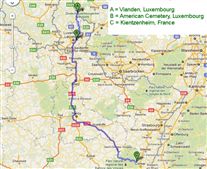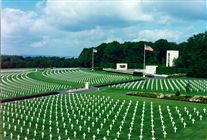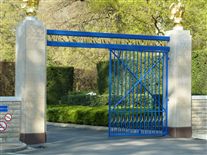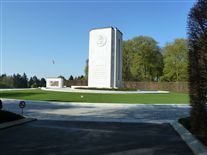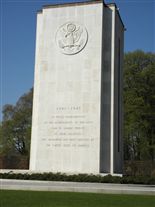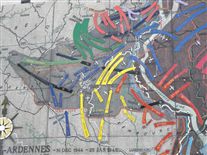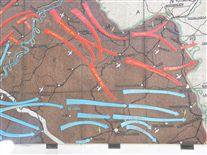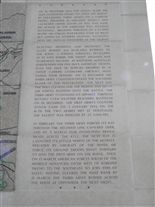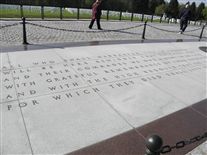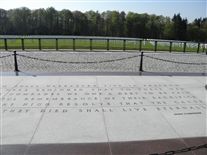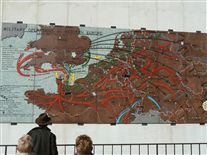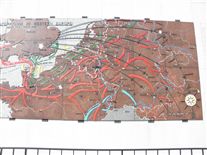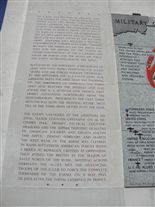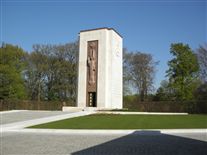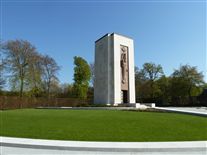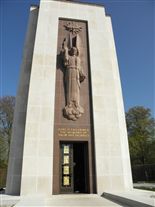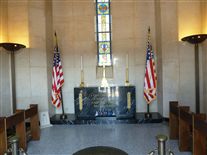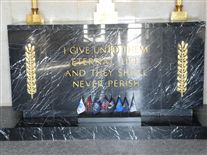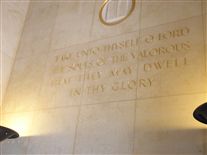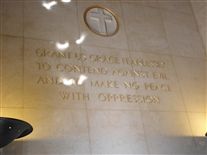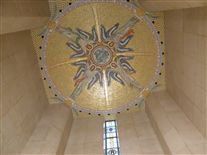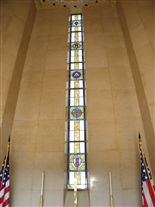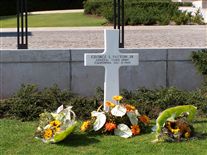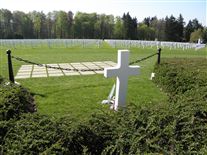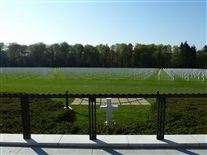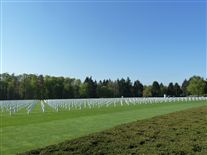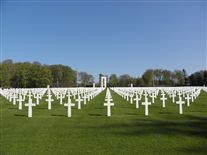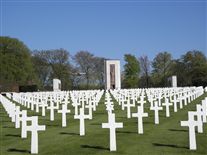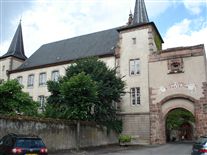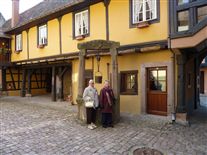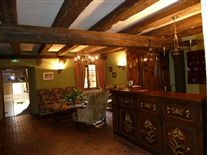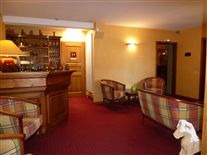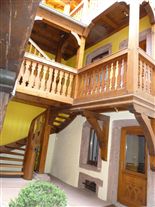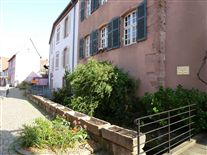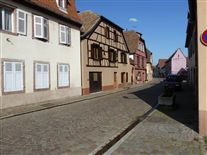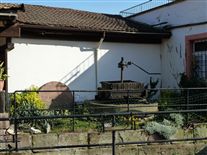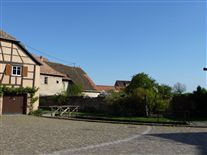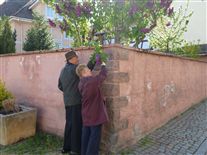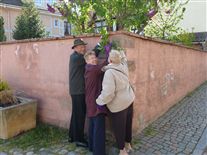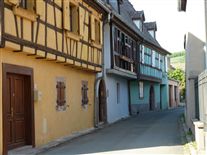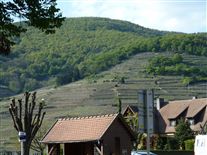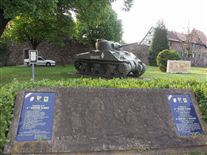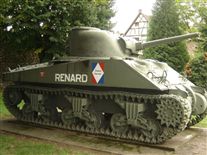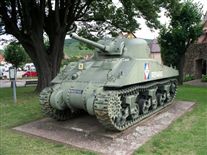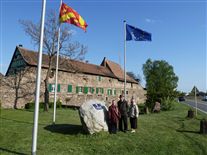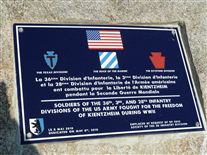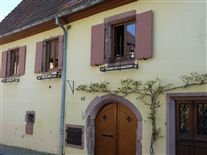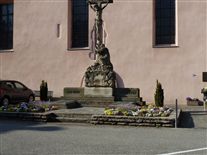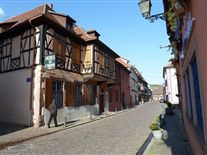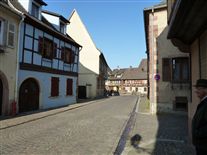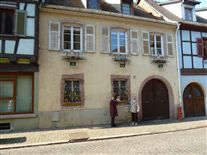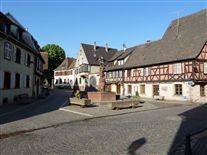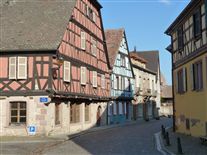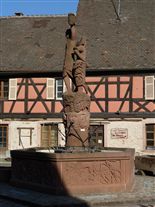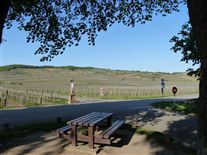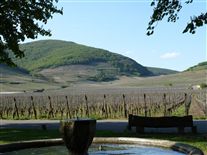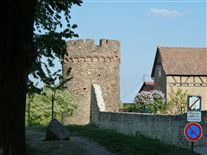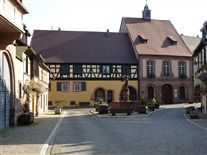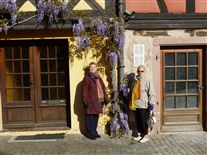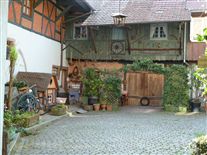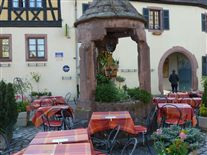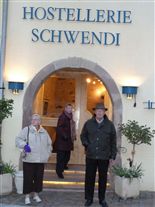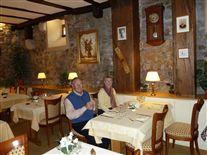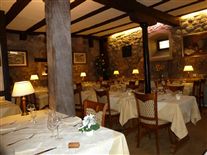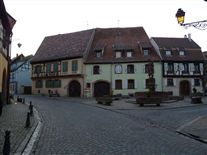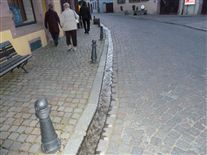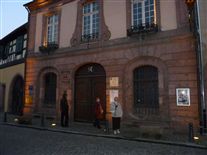Luxembourg_American_Cemetery.jpg
American Cemetary in Luxembourg - Click 'Details' for more information
The Luxembourg American Cemetery and Memorial is located in Luxembourg City, Luxembourg. The cemetery can be found 2.5 kilometers southwest of Findel Airport. It is administered by the American Battle Monuments Commission. Under a US-Luxembourg treaty signed in 1951 the US government was granted free use in perpetuity of the land covered by the cemetery, without taxation.
The cemetery, which is 50.5 acres (204,000 m2) in extent contains the remains of 5,076 American service members. On 22 occasions two brothers rest side-by-side in adjacent graves. Most of the interred died during the Battle of the Bulge which was fought nearby in winter 1944/spring 1945. The 5,076 headstones are set in 9 plots of fine grass, lettered A to I. Separating the plots are two malls radiating from the memorial and two transverse paths. Two flagpoles overlook the graves area. Situated between the two flagpoles lies the grave of General George S. Patton Jr.
Not far from the cemetery entrance stands the white stone chapel, set on a wide circular platform surrounded by woods. It is embellished with sculpture in bronze and stone, a stained-glass window with the insignia of the five major U.S. commands that operated in the region, and a mosaic ceiling.
German fallen from the same battle are buried in the Sandweiler German war cemetery, about 1.5 kilometres away. The design of the tombstones are dark stone crosses compared to white tombstones of the American cemetery.
Patton_grave.jpg
Patton's Grave - Click 'Details' for more information
Road accident and death:
On December 9, 1945, Patton was severely injured in a road accident. He and his chief of staff, Major General Hobart R. "Hap" Gay, were on a day trip to hunt pheasants in the country outside Mannheim, Germany. Their 1938 Cadillac Model 75 (a full size Cadillac Series 70 V-8 car) was driven by Private First Class Horace L. Woodring (1926–2003), Patton sat in the back seat on the right side, with Gay on his left, as per custom. At 11:45 near Neckarstadt (Mannheim-Käfertal), a 2½ ton GMC truck driven by Technical Sergeant Robert L. Thompson made a left turn in front of Patton's Cadillac. Patton's car hit the front of the truck, at a low speed.
At first the crash seemed minor, the vehicles were hardly damaged, no one in the truck was hurt, and Gay and Woodring were uninjured. However, Patton was leaning back with trouble breathing; he had been thrown forward, causing his head to strike a metal part of the partition between the front and back seats. This impact inflicted a severe cervical spinal cord injury. Paralyzed from the neck down, he was rushed to the military hospital in Heidelberg. Patton died of a pulmonary embolism on December 21, 1945. The funeral service was held at the Christ Church (Christuskirche) in Heidelberg-Südstadt.
This incident was dramatized in the made for TV movie The Last Days of Patton in 1986 with George C. Scott reprising his role as Patton.
Patton was buried at the Luxembourg American Cemetery and Memorial in Hamm, Luxembourg along with other members of the Third Army, as per Patton's request to "be buried with my men." On March 19, 1947, his body was moved from the original grave site in the cemetery to its current prominent location at the head of his former troops. A cenotaph was placed at the Wilson-Patton family plot at the San Gabriel Cemetery in San Gabriel, California, adjacent to the Church of Our Saviour (Episcopal), where Patton was baptized and confirmed. In the narthex of the sanctuary of the church is a stained glass window honor which features, among other highlights of Patton's career, a picture of him riding in a tank. A statue of Patton was placed on the grounds of the church. Patton's car was repaired and used by other officers. The car is now on display with other Patton artifacts at the General George Patton Museum at Fort Knox, Kentucky.
